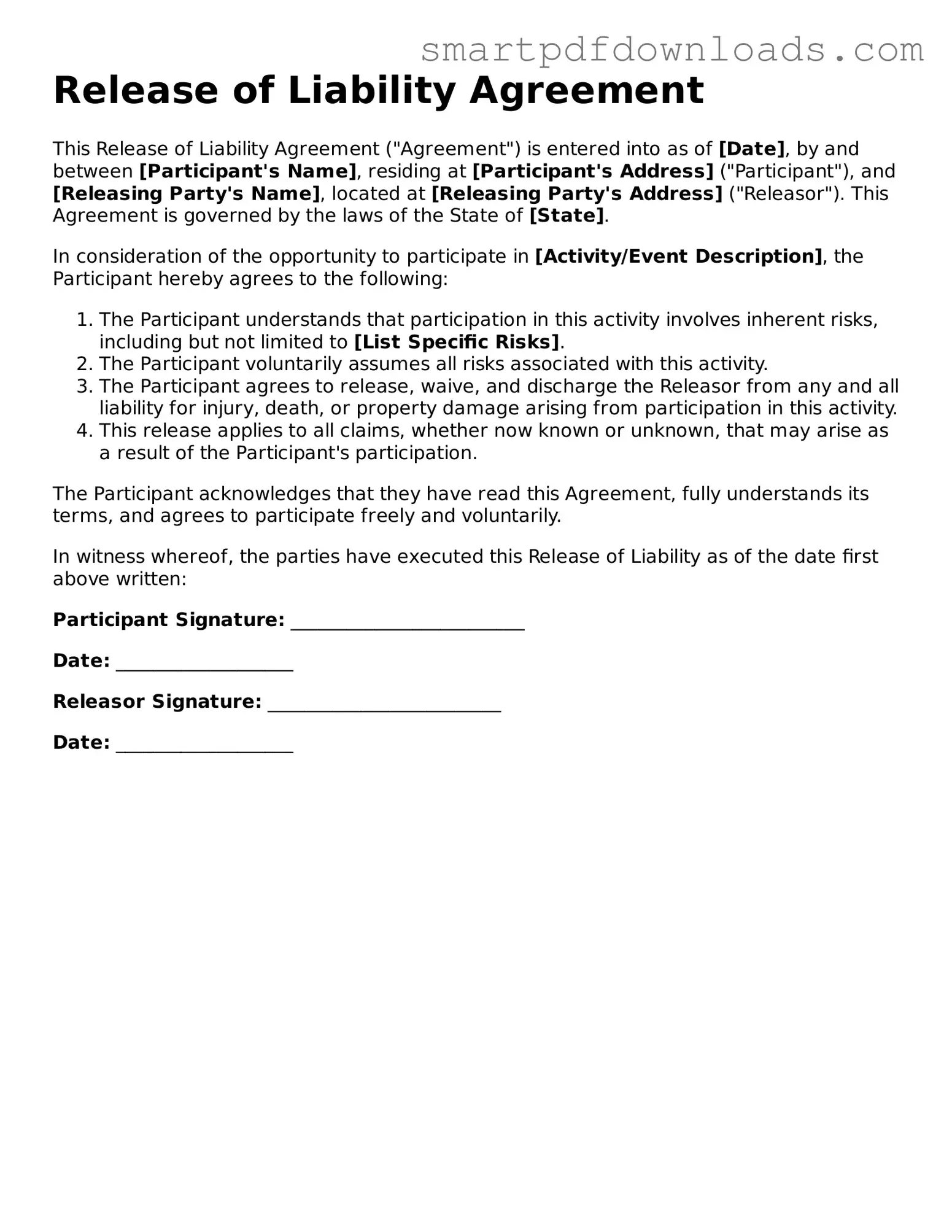Release of Liability Agreement
This Release of Liability Agreement ("Agreement") is entered into as of [Date], by and between [Participant's Name], residing at [Participant's Address] ("Participant"), and [Releasing Party's Name], located at [Releasing Party's Address] ("Releasor"). This Agreement is governed by the laws of the State of [State].
In consideration of the opportunity to participate in [Activity/Event Description], the Participant hereby agrees to the following:
- The Participant understands that participation in this activity involves inherent risks, including but not limited to [List Specific Risks].
- The Participant voluntarily assumes all risks associated with this activity.
- The Participant agrees to release, waive, and discharge the Releasor from any and all liability for injury, death, or property damage arising from participation in this activity.
- This release applies to all claims, whether now known or unknown, that may arise as a result of the Participant's participation.
The Participant acknowledges that they have read this Agreement, fully understands its terms, and agrees to participate freely and voluntarily.
In witness whereof, the parties have executed this Release of Liability as of the date first above written:
Participant Signature: _________________________
Date: ___________________
Releasor Signature: _________________________
Date: ___________________
